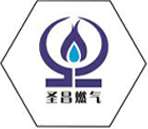
Sep . 28, 2024 20:53
Back to list
Understanding the Functionality and Applications of Pneumatic Valves in Industry
Understanding Pneumatic Valves Essential Components of Pneumatic Systems
Pneumatic valves play a crucial role in various industrial applications, enabling the control and regulation of airflow within pneumatic systems. These valves are designed to manage the direction, pressure, and flow of compressed air, which is a vital component in numerous automated processes. Understanding the functionality and types of pneumatic valves can enhance system efficiency and reliability.
A pneumatic valve operates by either opening or closing in response to specific signals, which can be electrical or mechanical
. The primary function of these valves is to control the output of compressed air to different parts of a system, ensuring that machinery operates smoothly. In many applications, such as assembly lines, packaging, and material handling, pneumatic valves are integral to achieving automation and efficiency.There are several types of pneumatic valves, each serving unique purposes within a system. The most common types include directional control valves, pressure control valves, and flow control valves.
1. Directional Control Valves These valves dictate the path of the airflow in the system. They can be double-acting or single-acting, depending on the type of actuator they serve. These valves can have multiple ports, allowing for complex control over various actuators and cylinders. The commonly used configurations include 2/2, 3/2, and 5/2 valves, describing the number of paths (ports) and positions they can assume.
pneumatic valve

2. Pressure Control Valves These valves regulate the pressure within the pneumatic system to prevent overpressure situations. They help maintain the system’s integrity and protect sensitive components from potential damage. Pressure relief valves and pressure regulators fall under this category, each serving specific functions.
3. Flow Control Valves These are responsible for adjusting the rate of airflow in the system. By controlling the speed of pneumatic actuators, flow control valves ensure that operations occur at the desired pace, enhancing the overall performance of the system. They are essential in applications where speed and precision are critical.
In the design of pneumatic systems, choosing the right type of valve is imperative. Factors such as the system’s requirements, the working environment, and the desired level of automation influence this decision. For instance, a system that requires rapid response times might benefit from directional control valves with faster actuation capabilities.
In conclusion, pneumatic valves are indispensable components that significantly impact the efficiency of pneumatic systems. As industries continue to embrace automation, understanding the various types of valves and their functions will enable engineers and technicians to design more effective systems, ultimately improving productivity and operational reliability. By harnessing the power of pneumatic valves, companies can maximize their operational potential and remain competitive in the fast-paced industrial landscape.
Latest news
-
Safety Valve Spring-Loaded Design Overpressure ProtectionNewsJul.25,2025
-
Precision Voltage Regulator AC5 Accuracy Grade PerformanceNewsJul.25,2025
-
Natural Gas Pressure Regulating Skid Industrial Pipeline ApplicationsNewsJul.25,2025
-
Natural Gas Filter Stainless Steel Mesh Element DesignNewsJul.25,2025
-
Gas Pressure Regulator Valve Direct-Acting Spring-Loaded DesignNewsJul.25,2025
-
Decompression Equipment Multi-Stage Heat Exchange System DesignNewsJul.25,2025

